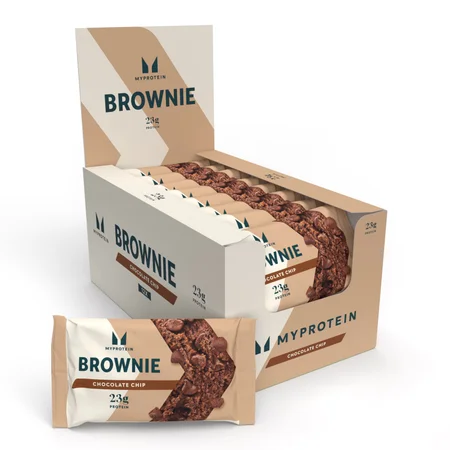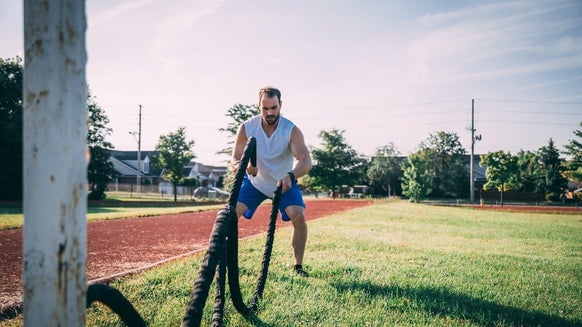What Is Reverse Dieting?

When your weight loss finally stalls after weeks or months of following the same plan, you might be frustrated. Doing the same workouts and following the same eating pattern should still work — but for some reason it doesn’t any more. If this sounds like the plateau that you’re hitting, it might be time to try something different — reverse dieting.
What is a Reverse Diet?
Reverse dieting is the next step in a weight loss journey when you’re ready to increase your calorie intake to prevent your metabolism from slowing down. The key to achieving weight loss is to burn more calories than you take in – creating a calorie deficit. However, in the long term, extreme low-calorie diets can actually slow down your metabolism.

How does it work?
When your body is consistently in a calorie deficit and doesn’t have enough fuel (calories) coming in on a regular basis, it eventually begins to conserve energy by burning fewer calories. Kind of like you need to put fuel into your car to make it move, you have to put calories into your body to keep your metabolism burning.
Our bodies are always trying to keep a state of “homeostasis”. This means keeping things running efficiently and adjusting to changes in the environment.1 Many factors play a role in our body weight — not just what we eat and how much we move, but also our appetite (regulated by hormones), sleep patterns, stress levels, health conditions, and medications.1 Add the challenge of a food-focused, sedentary environment, and it can be really difficult to continue to see the numbers on the scale go down.
Research shows that long-term dieting can reduce the amount of calories our bodies burn, and it can take a few weeks to reverse this process.2 While maintaining a low calorie intake can help with weight maintenance, over time your body adapts and works less efficiently.2 For these reasons, long-term maintenance of weight loss can be really difficult, making reverse dieting a great opportunity to challenge your body to get out of a metabolic rut.
How to Get Started
Once you reach your weight loss goal, or if you stop seeing weight loss after following a reduced calorie plan that was previously working, it might be time to try reverse dieting. The idea is to help your body re-adapt to eating more food slowly, and jump start your metabolism. By slowly increasing your intake week to week, you can monitor how your body reacts and find out what calorie level and macro distribution can help boost your metabolism back to normal.
1. Track in detail
To be successful when trying to reverse diet, you have to be prepared to keep very detailed trackers of how much you’re eating and how much you’re exercising. If you’re following a calorie-based or macro-based plan, it’s important to know what levels of intake were working for weight loss, and knowing for sure that you’re following the same plan without the same results.
For example, if you were consuming 2000 calories daily and seeing weight loss of 1-2 pounds per week, it was probably the right calorie level for you based on your activity level. If this calorie level STOPS making you lose weight (and you know you’ve been accurate with your daily calculations), it might be time to try increasing your intake slowly. Don’t try reverse dieting until you hit a plateau for 4 or more weeks. It takes about a month to really see a consistent trend in our weight. Sometimes our bodies have a temporary stalling point that fixes itself after a week or two, so you want to be sure that you really have reached a stopping point before you make this type of change.
2. Slowly add on calories
The basics of reverse dieting suggest adding in 100 or so calories per day for a week at a time and monitoring how your weight changes. If you’re starting at a lower calorie level, you might only want to add in 75 or so to start; and if you’re following a much higher calorie diet, you may need to add up to 250 more calories.
If, after one week of an additional 100 calories, you see weight loss again, keep that same calorie intake for another week and monitor the change. If you continue to lose weight, add another 100 calories and see what happens. If your weight doesn’t change after a few weeks, you may have found your “maintenance” intake level. If you continue to lose weight, keep experimenting week to week until you find the higher calorie level that still leads to weight loss.
3. Find which macros work best
This plan can also work with macros. If you’re following a macro plan, try adding in the extra macros from protein and see how your body reacts. Some people have greater success adding in some fat or some carbohydrates based on their exercise patterns. If you’re trying to build muscle, focus on protein. Endurance athletes may benefit from extra carbs, while adding in more fat can be the easiest way to boost your intake without a lot of extra food (since fat is calorie-dense).

Steps in reverse dieting
- Be sure you’re monitoring your intake accurately
Whether you’re keeping track of macros or calories, try to weigh or measure yourself to maintain accuracy. When you’re trying to manipulate small changes in your diet, it’s crucial to be very detailed to be able to monitor the way your body reacts.
- Decide how to increase your intake slowly
Will you increase one macro group or just focus on calorie intake? Will you add in another small meal or snack or just increase portions throughout the day? Consider what will work best for you and your lifestyle, while still tracking your intake accurately.
- Focus on healthy foods
While one benefit of reverse dieting might include adding back in some “cheat” foods to your diet, your body will respond best to healthy food choices. When possible, add your calories through whole grains, healthy fats, lean proteins, or fruits and vegetables (based on your macro goals).
- Consider your workouts
If you’re trying to build or maintain muscle, make sure you’re consuming adequate protein. If you’re pushing yourself during cardio, healthier carbs might be necessary. Increasing workout intensity and time is not recommended while reverse dieting. That’s because changing too many factors at once makes it hard to track the impact of your diet changes.
Potential Benefits of Reverse Dieting
Reverse dieting may have different benefits for everyone, but here are some examples of benefits that make it a popular strategy:
Less stress about eating. Being able to have a larger portion or another food that you may have previously been excluding from your diet You may find it easier to keep to your diet goals if you’re eating more and feeling less deprived You may have more energy for your workouts (since you’re bringing in more fuel) Improved recovery and improved performance. Your muscles have more access to the necessary nutrients for recovery, making you ready for your next workout sooner Greater weight loss when you return to dieting. If you’re able to lose or maintain weight at a higher calorie level, when you decide to cut calories or macros or increase your exercise, you might see a greater response from your metabolism
Potential Challenges of Reverse Dieting
Lack of research. While reverse dieting is nothing new in the world of bodybuilding, it’s not well studied at this time.2 However, the theory is logical and many have found it to be successful. Challenging to keep track. You have to be consistently diligent about tracking your calories and macros, not just while you’re adding, but also previously, so you know you really are at a stalling point from following a certain calorie or macro level before you start Hard to predict. Reverse dieting is mostly a trial and error process. It takes some time to determine how your body responds to the diet changes and you have to stay the course to really discover your maintenance level Time-consuming. The theory of reverse dieting takes a lot of work to personalize to your own situation – but that time is worth it if helps get the results you’re looking for
Take home message
Reverse dieting is an intense strategy to boost your metabolism after you’ve hit a wall in your fat- or weight loss journey. While it takes a lot of work, if you have great attention to detail and are able to manipulate small changes to your diet, you might find that reverse dieting has many benefits that can help you reach your goals quicker, and feel better about eating more food during the day. While there is limited research supporting the theory of reverse dieting, the potential benefits are appealing enough to make it a popular strategy.

Claire is a Registered Dietitian through the Academy of Nutrition and Dietetics and a board-certified Health and Wellness Coach through the International Consortium for Health and Wellness Coaching. She has a Bachelor of Science in Biology and a Master’s degree in Clinical Dietetics and Nutrition from the University of Pittsburgh.
Talking and writing about food and fitness is at the heart of Claire’s ethos as she loves to use her experience to help others meet their health and wellness goals.
Claire is also a certified indoor cycling instructor and loves the mental and physical boost she gets from regular runs and yoga classes. When she’s not keeping fit herself, she’s cheering on her hometown’s sports teams in Pittsburgh, or cooking for her family in the kitchen.
Find out more about Claire’s experience here.






